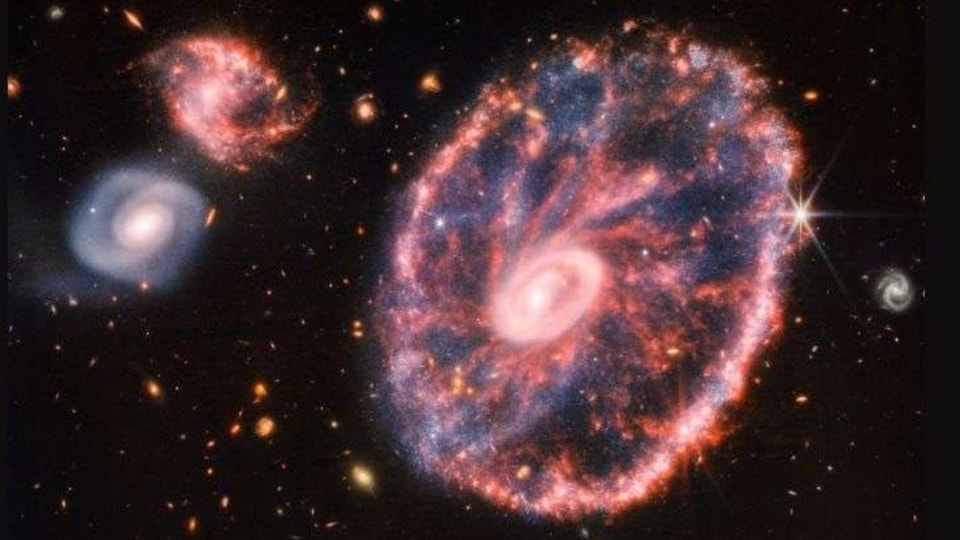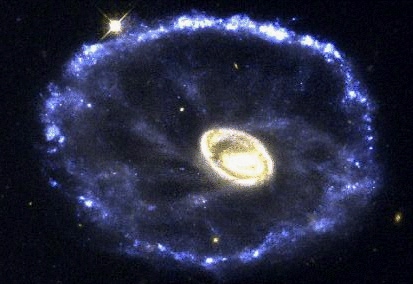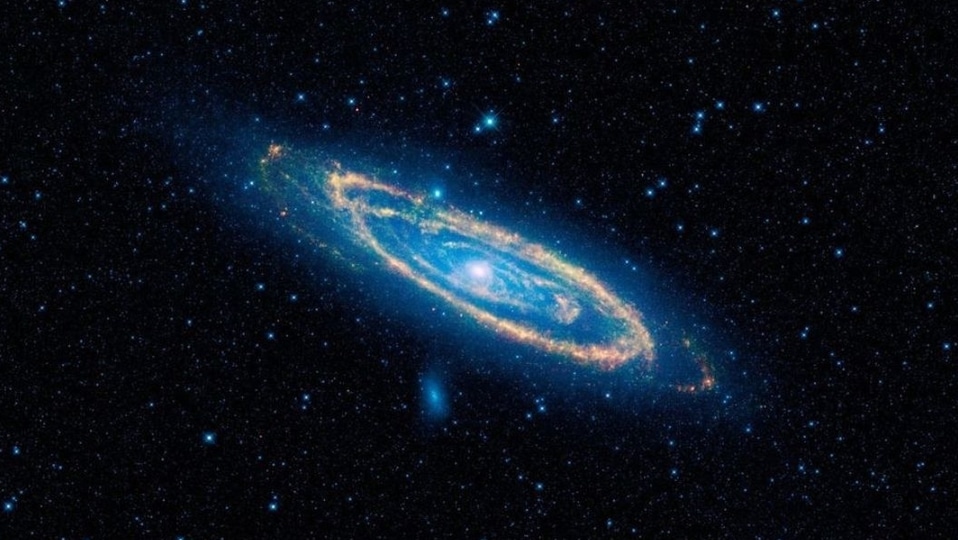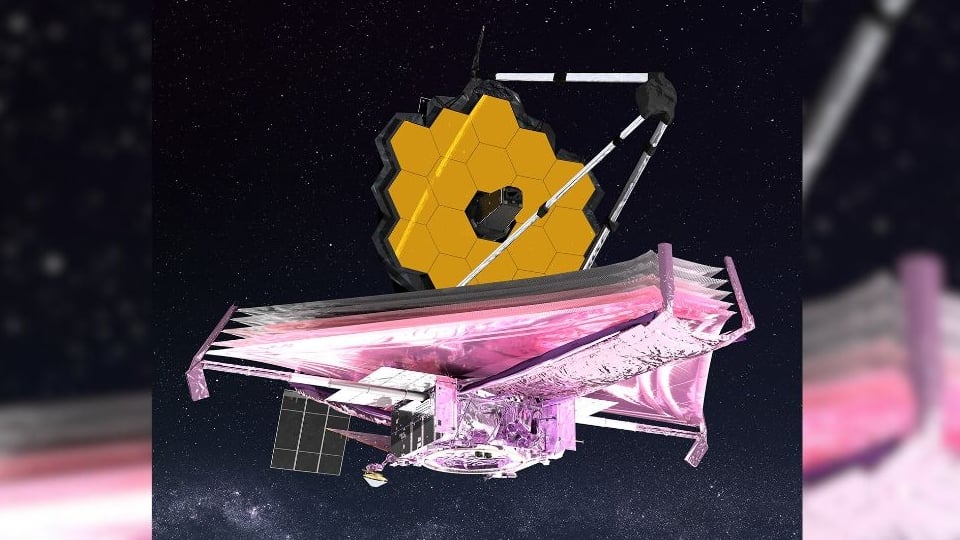Extraordinary! James Webb Space Telescope snaps explosive star birth after the Big Bang
The James Webb Space Telescope, NASA's powerful space observatory, has provided an image of a remarkable star-forming galaxy soon after the Big Bang.



_1659528105742_1659528125441_1659528125441.jpg)


 View all Images
View all ImagesThe James Webb Space Telescope, often hailed as a time machine, continues to astound scientists and attract the public with its remarkable discoveries. Recently, astronomers utilised this telescope's cutting-edge technology to observe a distant star-forming galaxy, delving into its intricate structure with unprecedented detail.
Discovery of the Galaxy
Harnessing the capabilities of NASA's billion-dollar observatory, the James Webb Space Telescope's Orbiter Spacecraft has unveiled the stellar composition of GN20, one of the earliest-known galaxies in the universe. Situated a staggering 12 billion light years away, this captivating discovery represents a luminous and dust-laden star-forming galaxy of extraordinary brilliance.
Significance of the Galaxy
What makes GN20 particularly intriguing is its relatively recent formation, occurring a mere 1.5 billion years after the cataclysmic event known as the Big Bang. Positioned within a region of space referred to as a protocluster or galaxy overdensity, this area holds astronomers' fascination due to its eventual culmination in the formation of colossal galactic clusters.
Insights into the Galaxy's Structure
The captivating image captured by the James Webb Space Telescope allows us to peer back in time when the universe was a mere 1.5 billion years old, as it stands at approximately 13.5 million years presently. Astonishingly, this ancient galaxy boasts a star formation rate approximately 1,860 times greater than the mass of our Sun each year. Astronomers, under the guidance of Luis Colina from the Spanish Astrobiology Centre, employed the Mid-Infrared Instrument (MIRI) to examine GN20's structural properties during November 23-24, 2022.
Findings of the Study
Analysis of the MIRI images unveiled a clumpy molecular gas surrounding the galaxy, forming a colossal disk spanning about 46,000 light-years in diameter. Furthermore, the measurements indicated that the galaxy comprises a diffuse gas envelope encompassing a densely packed nucleus of shimmering stars. Remarkably, the nucleus spans a mere 2,600 light-years across, while the gaseous envelope extends approximately 23,000 light-years.
About the James Webb Space Telescope
James Webb Space Telescope stands as NASA's most prominent and powerful space science observatory. Boasting a large infrared telescope with a primary mirror of around 6.5 metres, this state-of-the-art instrument represents a monumental leap forward in our quest to understand the cosmos. It has been positioned a million miles out into space. It orbits the Sun and not the Earth.
Catch all the Latest Tech News, Mobile News, Laptop News, Gaming news, Wearables News , How To News, also keep up with us on Whatsapp channel,Twitter, Facebook, Google News, and Instagram. For our latest videos, subscribe to our YouTube channel.


























